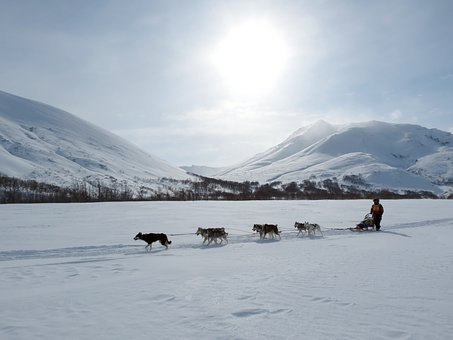
P.K. Page’s poem “Stories of Snow” is a beautiful work of poetry. The poem depicts the conflict between innocence and reality. It renders the dreamland vision obsolete. The workings of the mind and the unconscious, frequently as in dreams are controlled from somewhere else. The poetry appears to be visionary, and it elicits sympathy from the readers. Pages’ poetry is about childhood, its innocence and clarity, which leads to the discovery of a new and different reality than adulthood and reason. She deals with dreams explicitly and uses colours as symbols; white appears to be used by her in this poem.
Stories of Snow | Summary and Analysis
There is an element of artistic curiosity and exploration in Stories of Snow. The Canadian landscape, the West Coast rainforest landscape, the tropics, and Northern Europe are all outlined. More than that, these are snowy and blossoming emotional and metaphorical landscapes. Nature’s treasures are revealed to human search in Pages poems, unsealing her eyes, illuminating her mind, and purifying her heart; an influence she breathes from all of life’s sights and sounds. Page’s poems are a true vehicle for that inner reservoir of deeper emotional and intellectual exploration that broadens one’s sense of life in open space in yet another way. P.K. Page was also a gifted artist, and her poems are quite often strikingly visual.
Stories of Snow | Analysis, Lines 1-6
Those in the vegetable rain retain
an area behind their sprouting eyes
held soft and rounded with the dream of snow
precious and reminiscent as those globes – souvenir of some never nether land –
which hold their snowstorms circular, complete,
high in a tall and teakwood cabinet.
Snow stories emerge from childhood memories, reveries, and dreams of “some never-nether land” where snowstorms are held “circular, complete” in crystal globes kept in a high-talk teak wood cabinet. Locations of innocence and perfection are encapsulated here, “behind the sprouting eyes” and caught in a “vegetable rain.” The brief opening stanza’s conciseness and richness of language and imagery immediately set the tone. It alludes to the main theme of the contrast between childhood innocence and the safe and changeless purity of the snowflakes retained in the small glass globe where the child may stir up the storm.
Stories of Snow | Analysis, Lines 7- 11
In countries where the leaves are large as hands
where flowers protrude their fleshy chins
and call their colours
an imaginary snowstorm sometimes falls
among the lilies.
The poem’s main contrast is that between the white world of innocence and art and the lush tropical landscape of “countries where the leaves are as big as hands/where flowers peptide their fleshy chins and call their colours”. This represents the natural environment of appearance and instinct, of uncontrollable continued growth, that strangely and betrays but into which child can escape.
Stories of Snow | Analysis, Lines 12-21
And in the early morning one will waken
to think the glowing linen of his pillow
a northern drift, will find himself mistaken
and lie back weeping.
And there the story shifts from head to head,
of how, in Holland, from their feather beds
hunters arise and part the flakes and go
forth to the frozen lakes in search of swans –
the snow light falling white along their guns,
their breath in plumes.
The poet then describes the dawn of a morning when one wakes up thinking they are in a place where they can embrace themselves, only to “lie back weeping” when they realize they are mistaken. The poet suggests a change in the story, and the hunters are now looking for a swan. From the first stanza, the dreams of this weakened sleeper in a land of fleshy flowers proliferate. In Holland during the winter, we realize that the opening’s “never-nether land” was the object of pun. The hunters sail their white-winged ice boats across the frozen lakes in search of the swan.
Stories of Snow | Analysis, Lines 22- 27
While tethered in the wind like sleeping gulls
ice boats await the raising of their wings
to skim the electric ice at such a speed
they leap jet strips of naked water,
and how these flying, sailing hunters feel
air in their mouths as terrible as ether.
Page leaves clues indicating that this dream state is not ideal. She depicts the huntsmen’s ice-boats as “tethered in the wind like sleeping gulls.” Seagulls sleep almost entirely white because their beaks are encased between their wings. The association of “sleep” and “white” with being tied or restrained begins. Then air is described as “terrible ether.” Ether used as an anesthetic. It also denotes the area beyond the visible. Sedation allows you to travel to a place beyond reality, which is the very definition of dreaming.
Stories of Snow | Analysis, Lines 28- 36
And on the story runs that even drinks
in that white landscape dare to be no colour;
how, flasked and water clear, the liquor slips
silver against the hunters’ moving hips.
And of the swan in death these dreamers tell
of its last flight and hot it falls, a plummet,
pierced by the freezing bullet
and how three feathers, loosened by the shot,
descend like snow upon it.
Even the drinks in the landscape are colorless. The clear water and “the liquor slips silver against the hunters’ moving hips”. All of the images in this stanza are of whiteness and lack of colour, of snowflakes and ice, and we can see that the innocent world of the child’s glass globe has taken on a new beautiful but sinister significance. With respect to the swan’s death, the hunters discuss “its last flight” and with the bullet fired the swan plummets to death. Instead of blood, we find “three feathers, loosened by the shot, / descend like snow upon it” from the hunted bird.
Stories of Snow | Analysis, Lines 37- 43
While hunters plunge their fingers in its down
deep as a drift, and dive their hands
up to the neck of the wrist
in that warm metamorphosis of snow
as gentle as the sort that woodsmen know
who, lost in the white circle, fall at last
and dream their way to death.
Page transports us to a world where fertility and colour are restricted, snowstorms are warm, and death, even the killing of a beautiful swan is graceful. To become pure, any ghoulish scene can be passed through the “warm metamorphosis of snow.” Page leaves hints that this dream state is not ideal. Finally, the woodsmen “dreamed themselves to death.” Those who dream are doomed to die. Neverland is not a real place. The story told is to ascertain a temporary escape from the clutches of the colorful world. This snowy land is a dreamland that acts as the ultimate freedom destination.
Stories of Snow | Analysis, Lines 44- 50
And stories of this kind are often told
in countries where great flowers bar the roads
with reds and blues which seal the route of snow –
as if, in telling, raconteurs unlock
the colour with its complement and go
through to the area behind the eyes
where silent, unrefractive whiteness lies.
Finally, the reader is encouraged to “unlock /the colour with its complement and go/through to the area behind the eyes/where silent, unrefractive whiteness lies”. These could be primarily emotional landscapes, a metaphoric desire to escape the twittering and human difficulty of the modern world – somewhere more peaceful, where access to what is truly important becomes more direct and less burdened. Anyone can access “the area behind the eyes / where silent, unrefractive whiteness lies,” whether they are “lost in a white circle” or rooted in the tropics. Unrefracted white light is analogous to unlived dreams, unshared thoughts, and untold stories.
Page may be championing potential over development – innocence over maturity – by keeping the light within. A child, in all its purity, has the potential to become anything, similar to how white light stores all colours. Because its possibilities are limitless, a blank slate is more powerful than anything written. A child, on the other hand, must develop. A swan must perish. To print a poem, ink must tarnish a blank page.
Stories of Snow | About the Author – P. K Page
P.K. Page is a Canadian poet. Planet Earth: Poems Selected and New (2002), Evening Dance of the Grey Flies (1981), Cry Ararat! Poems New and Selected (1967), The Metal and the Flower (1954), and As Ten As Twenty (1954) are among her many poetry collections. Her second book, The Metal and the Flower received the Governor General’s Award. She was appointed an Officer of the Order of Canada in 1977. A.J.M. Smith describes Page as “among the fine poets of this century”. Her early poems were inward-looking, fictitious biographies that rely heavily on evocative imagery and detailed depictions of particular contexts to express social concerns and transcendental themes. Her later works showed a new recession in form and a reduction in the number of images demonstrated. Her later poems are frequently set abroad and suggest a way out for the isolated, alienated individual.



